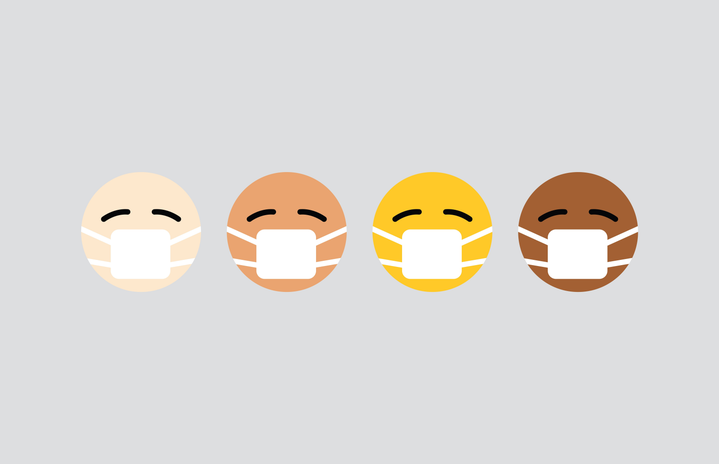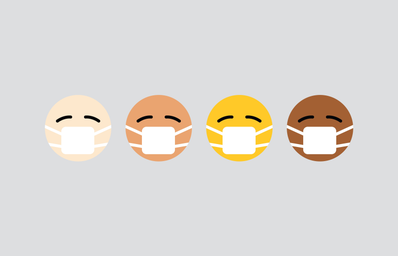The global situation with the new coronavirus is complex and unprecedented in many ways. When you combine that with the never-ending nature of the news cycle, there’s a lot of contradictory information out there and not a lot of straightforward answers. Is the coronavirus an epidemic, or a pandemic? Is social distancing the same thing as quarantining? It’s easy for unfamiliar terminology surrounding the disease to become muddled, or in some cases used improperly, amidst the flow of rapidly changing updates and chatter on social media.
If you find yourself overwhelmed with anxiety while reading and trying to understand technical terms in the news, you’re not alone. With some help from Merriam-Webster, Her Campus compiled the most important keywords that will help you break down stories and make smart decisions for your health and safety.
Coronavirus
Coronavirus refers to a family of viruses named for crownlike spikes on their surfaces. The viruses can cause the common cold or more severe respiratory diseases. SARS (severe acute respiratory syndrome), MERS (Middle East respiratory syndrome) and COVID-19, are all notable types of coronavirus.
COVID-19
COVID-19 is the illness related to our current pandemic. It is a highly infectious virus first detected in Wuhan, China in December 2019, and it can be spread between animals and people. Symptoms of COVID-19 include fever, cough and breathing trouble. Most develop only mild symptoms, but some people who are older or live with other medical complications develop more severe symptoms which can be fatal.
Symptom
A symptom is a sign or indication that someone has the disease. The most common symptoms of COVID-19 are fever, dry cough, and difficulty breathing.
Asymptomatic
Asymptomatic means that someone is showing no evidence of the disease, though that doesn’t mean they aren’t infected with COVID-19.
Incubation Period
Incubation period is the length of time from when infection begins and the appearance of signs of a disease. The CDC notes that symptoms for COVID-19 usually appear five days after infection.
Immunocompromised
Immunocompromised means having an impaired or compromised immune response. People that are immunocompromised are more vulnerable to becoming seriously ill if they are infected with COVID-19.
CDC
CDC stands for the Centers for Disease Control and Prevention, and it is a U.S. federal agency based in Georgia. The CDC states that its mission is to “protect America from health, safety and security threats, both foreign and in the U.S.” It plays a primary role in detecting and responding to new and emerging health threats, and it puts out new information on the coronavirus daily.
Social distancing can help slow the spread of #COVID19 in affected communities. This means avoiding crowded places and maintaining distance from others. More prevention tips: https://t.co/bUyobRHpCE. pic.twitter.com/IQjSwRxIzn
— CDC (@CDCgov) March 16, 2020
WHO
WHO stands for the World Health Organization, a United Nations agency based in Switzerland. It sets internationally accepted guidelines for treating diseases and coordinates responses to disease outbreaks globally.
Pandemic
A pandemic is a disease that has spread over a large area, impacting anywhere from an entire continent to the whole world. The WHO declared the coronavirus outbreak to be a pandemic on March 11, when it had spread to six continents and over 100 countries.
Epidemic
An epidemic is when a disease spreads from person-to-person, but it is not permanently common.
Community Spread
Community spread refers to the spread of a disease where the infection is unknown. The CDC announced that there was a possibility of community spread in the U.S. when a person in California who did not have relevant travel history or exposure to another known patient with COVID-19 was confirmed to have the infection.
Flattening the Curve
Flattening the curve means to slow the spread of a disease so that healthcare systems don’t become overwhelmed. If the virus spreads widely and quickly in the U.S., there may be too many people in the hospital at once, as there was in Italy.
KEEP YOUR DISTANCE. Social distancing will help New York #FlattenTheCurve.
STAY HOME, and cancel non-essential appointments and travel, even if you feel well.
People with no symptoms can still spread #Coronavirus. pic.twitter.com/20xSkcoqbv
— Andrew Cuomo (@NYGovCuomo) March 16, 2020
Mitigation
Mitigation refers to any measure used to slow the spread of a disease. Some forms of this include hand-washing and social distancing.
Isolation
Isolation is when someone who has been determined to be sick is kept apart from others.
Shelter In Place
This order requires residents to stay home unless absolutely necessary, with the exception that they are allowed to provide or receive essential services. Those services, for example, entail grocery shopping, visiting the doctor, or going to work if someone is in the healthcare field. California was the first state in the U.S. to issue a shelter-in-place order on March 16.
Quarantine
Quarantine is strict isolation to prevent the spread of a disease. Right now, people are being instructed to quarantine if they have symptoms of COVID-19, or if they have been exposed to the disease, even if they are not sick. For example, the passengers on the Diamond Princess cruise ship in Japan were quarantined. Even though quarantine sounds scary, in many ways it is a good thing because it helps keep people safe.
Social Distancing
Social distancing is a measure that reduces contact between large groups of people. This includes reducing travel, cancelling big conferences and events, and working from home. President Trump has warned against gatherings of 10 or more people, and restaurants and bars in numerous states are closing dine-in service as a way to promote social distancing.
We will continue updating this glossary as needed as the situation evolves.


